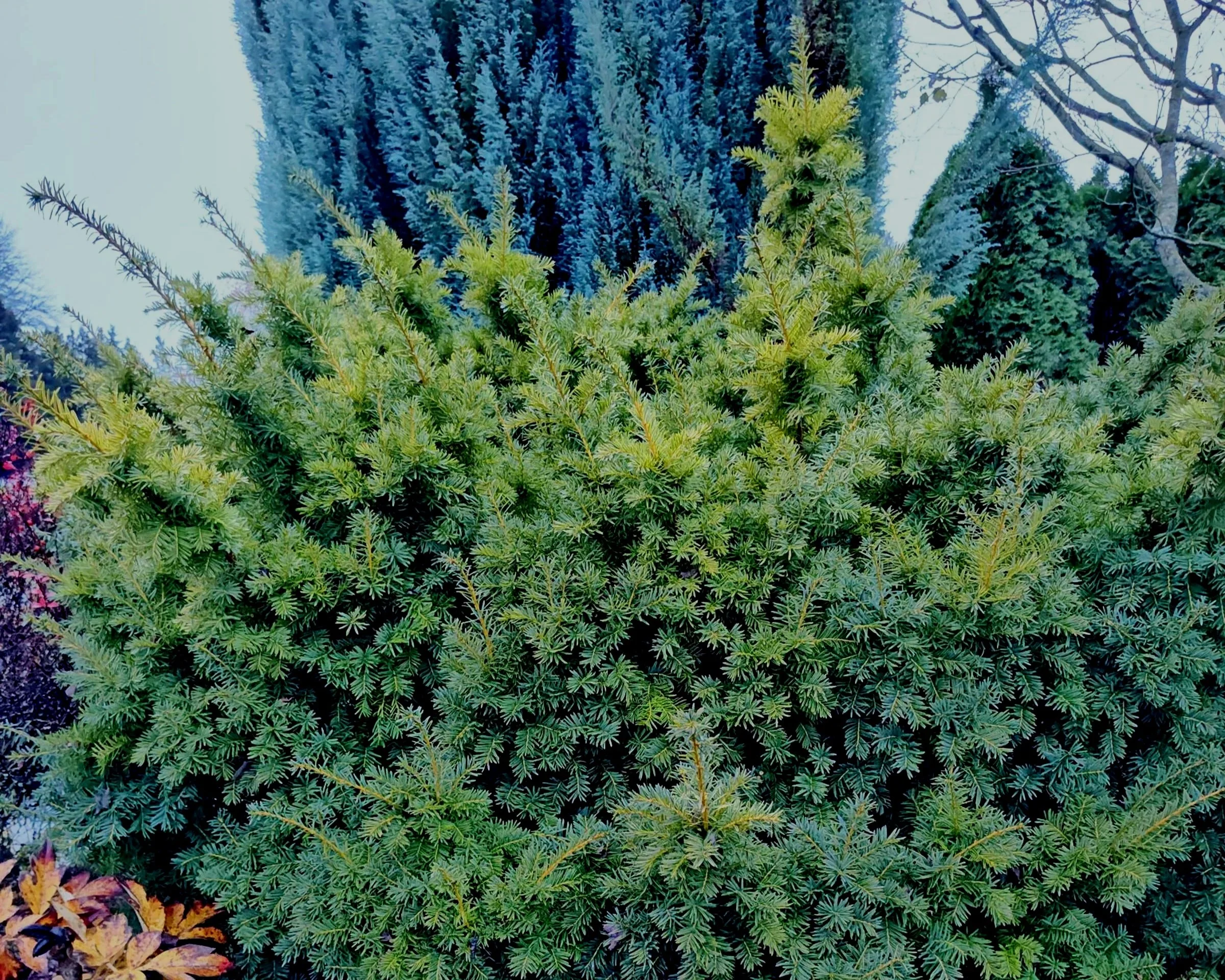As this glorious PNW summer weather continues, let us continue delving into the world of Hydrangeas. It is time for episode three, the grand finale of the Hydrangea trilogy… at least for the year 2025. In the last couple of weeks we have talked Hydrangeas for partial shade (Big-Leaf or Hydrangea macrophylla cvs) and others for a bit more sun like Oakleaf types (Hydrangea quercifolia cvs) and Smooth types (Hydrangea arborescens cvs). Now we get to talk about one of the most useful species for sunny gardens, Hydrangea paniculata, or what we call Panicle Hydrangeas.
These old fashioned beauties are often called “PeeGee” or “PG” type Hydrangeas, after the original cultivar eons ago (Hydrangea paniculata ‘Grandiflora’). This plant has been bred into a plethora of desirable flavors, and new ones continue to revolutionize how we think of and utilize these lovely shrubs. PG type Hydrangeas are all new wood bloomers, so one easy pruning each March for any gardener immediately brings flowering satisfaction that same summer. Any dead wood can be removed, opening up the center, and upright stems can be cut back to above a pair of buds. Hydrangeas have an opposite bud configuration; meaning that one stem cut back brings two new shoots in its place. Think of it this way, the one flower you had on that stem this season now becomes two flowers on two stems the next year by during this. I mean seriously, why not do this each March and keep your plant more compact AND double your blooming? A gardening no-brainer to me, and so easy to do!
Like with other types that we have discussed, a good feeding every March and again in June is ideal to maximize both growth and flower count. A granular organic rose and flower food is ideal, but in all honesty even an organic Rhododendron food is not the end of the world. If you really want to up your flower game, add in some UltraBloom from E.B. Stone Organics as well, as this food contains no nitrogen and is all about bud and bloom. Using higher nitrogen foods may help provide lush spring growth, but this practice also tends to lead to floppy stems. Plants should flop a bit when young, but as these shrubs mature, stems gain girth and your specimen should flop much less. The end result of pruning and feeding correctly will be years of fabulous summer color to brighten up your summer garden.
The bazillion named cultivars of PG Hydrangea are definitely getting overwhelming, but in all honesty I think it comes down to two major choices… First, how large do you want your Hydrangea to grow? Second, how quickly do you want it to turn pink/red in color? The foliage on all varieties will be very similar, while their flowers are a bit different. Keep in mind that this type of Hydrangea does not turn color with soil pH changes, but rather always opens lime or white and progresses into tones of pink to red as the summer marches on towards fall. Some flavors sport larger blooms, others are more open and airy, and many color up very quickly. Explore your options as there are far too many good ones to mention them all, but here are few to ponder…
“Get your lime on!” I am always honest, and not to sound like a typical male, but pink is just not my favorite color. Yes I have pink here and there, but I prefer it a bit less than other color options. So when I chose the PG’s for my landscape, I wanted the colors lime and white as long as possible, postponing the evolution to pink until later in the summer. ‘Limelight’ or now ‘Limelight Prime’ (thicker stems) make excellent specimens in the 6 to 8-feet tall range - both opening lime green, then brightening to white, and eventually adorning pink tones later. The dwarf versions of these are also sweet; ‘Little Lime’ and ‘Little Lime Punch’ (turns more Hawaiian punch red in fall), both staying more compact in the 4-feet tall range. If a ‘Mojito’ hits the spot in the summer heat, this variety may be for you with long-lasting lime coloring and dwarf size to only 3-feet tall or so.
“Go big or go home!” There are some truly spectacular options for larger growing PG type Hydrangeas, including the couple of limey ones I mentioned above. Some others worthy of consideration include ‘Vanilla Strawberry’ (a taller grower with massive white to pink panicles) and ‘Berry White’ (tall with more deep pink to red flowers once mature). ‘Pinky Winky’ might have one of the best names and is always a popular choice, along with being a good grower. ‘Fire and Ice’ grows tall with a bit more open panicles, adding texture and contrasting nicely with its bright red stems. ‘Diamond Rouge’ is another keeper, growing large with flowers evolving into deeper red tones in later summer and fall.
“Great things come in small packages!” There are some useful dwarf types in the world of panicle Hydrangeas to consider as well. I love my ‘Bobo’, a super tidy grower than stays under 4-feet tall. ‘Little Spooky'may be the next one I take home (sorry honey!) - it was just released and is touted as the smallest variety available at under 3-feet tall! Others that stay more compact are ‘Puffer Fish’ (4-feet tall with blooms lime to white then pink), ‘Little Quick Fire’ (4-feet tall, blooms earlier and quickly turns color), ‘Little Hottie’ (4-feet tall, big blooms with pink tones in fall), and ‘Fire Light Tidbit’ (3-feet tall, turns vibrant pink to red with time). If about 5-feet tall is the sweet spot for you, ‘Strawberry Sundae’ will be awfully hard to pass up, and it is perhaps the most popular one at our nursery, year after year.
“Looking for a small landscape tree, please!” Hydrangea trees, really? This type of Hydrangea can be found in tree form, solving the never ending small blooming tree requests from gardeners. You should see how cool the tree forms are of these, offering blooms all summer and fall, and maturing to a much more manageable size than other typical “tree” options. Varieties like ‘Limelight’, ‘Vanilla Strawberry’, ‘Berry White’ and other larger growers can be found grown this way.
I cannot resist just one last mention this week, a brand new PG flavor that has just arrived called ‘Skyfall.’ The flowers on these are simply magnificent, huge in size and each floret is shaped like a little star. These striking panicles look like big fat white Hyacinth flowers, a truly unique look on a compact grower that only reaches 4-feet tall or so. Plus, ‘Skyfall’ is one of my favorite Bond movies of all time and sometimes I just like the plant for its show AND its name!
As we march through another glorious summer in the PNW, every step can offer more Hydrangea flowers to captivate your imagination. A visit to your local garden center this time of year will open your eyes to these wonderful summer shrubs. Speak with a Certified Professional Horticulturist about your needs and allow them to show you some outstanding cultivars of PG Hydrangeas. After considering your options, simply plant them in moist yet well-drained soil, give them some sunshine and keep them well watered during the drier summer months. Then sit back, sip an icy cold beverage of your choosing and enjoy the kaleidoscope of Hydrangea flower power in your very own garden oasis.
Remember - leaves up, roots down…



